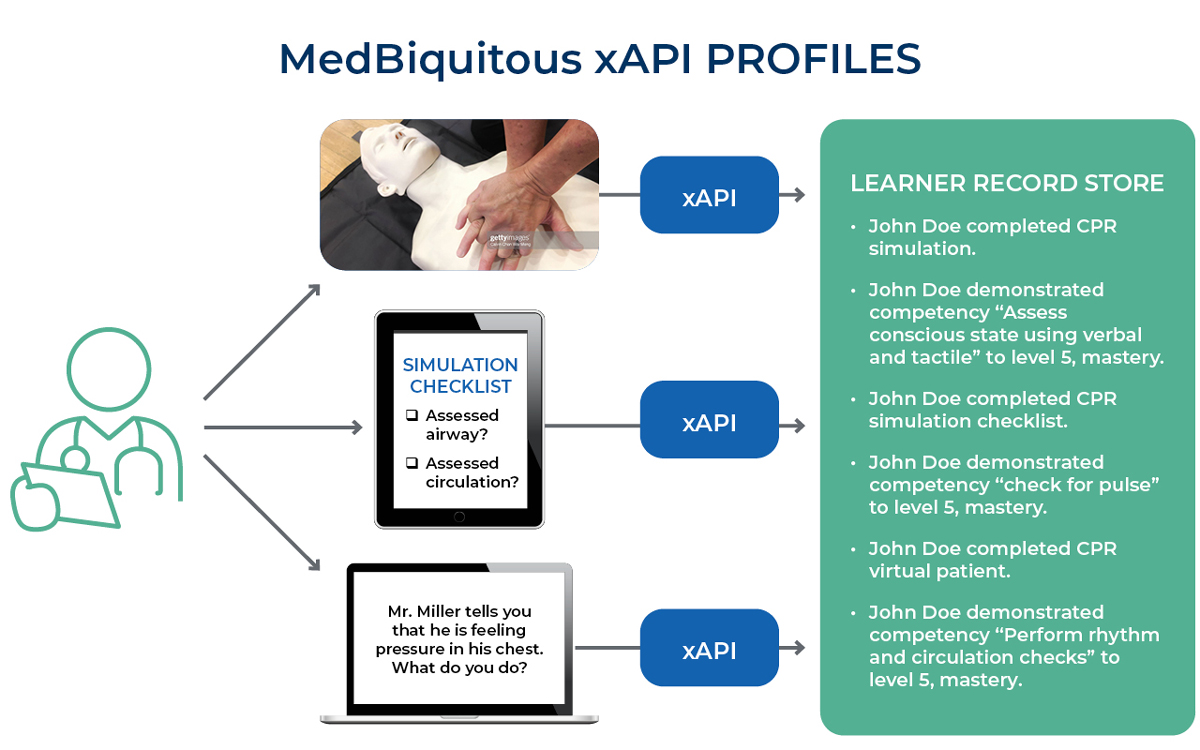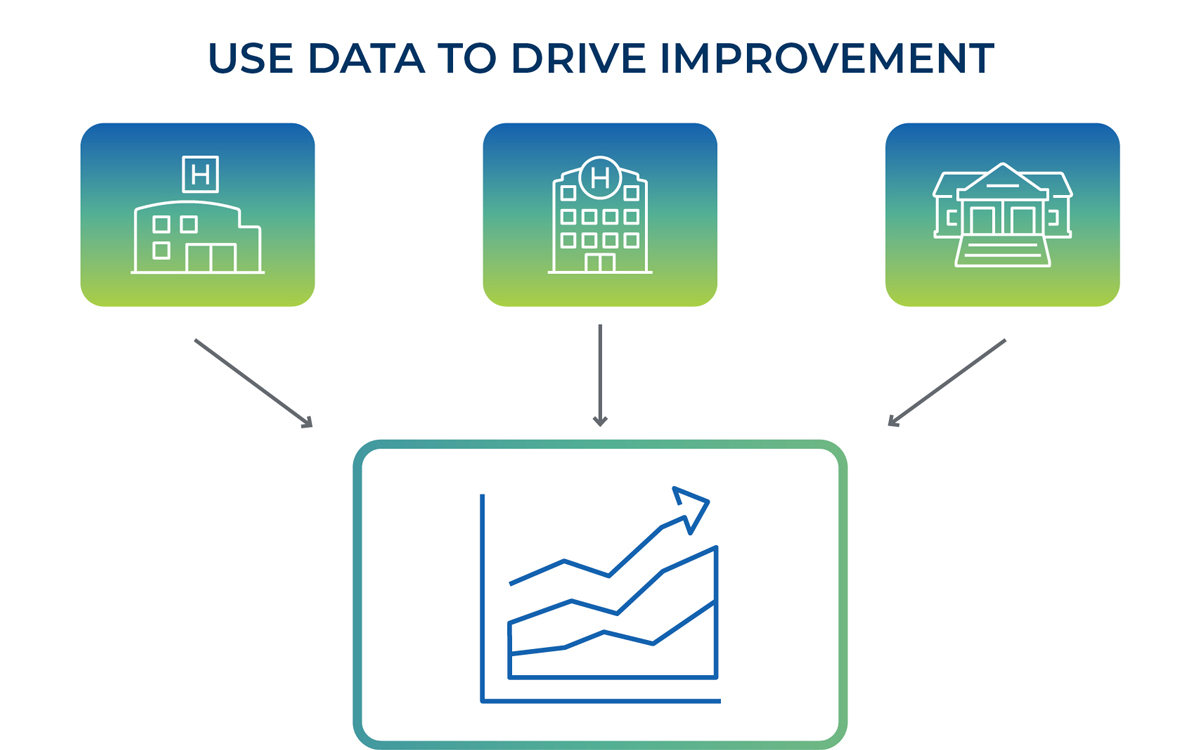Experience API (xAPI)

Often, data on learner performance remains locked in proprietary systems, unable to be combined with data from other sources, even if the data relates to the same educational experience. Education analytics offer an opportunity to better track learner educational activities and better understand the strengths and weaknesses of the health care workforce, as well as factors associated with higher performance. In addition, a rich store of learner data could be used to better tailor learning to individuals based on their experiences and achievements.
Social networking and system integration technologies offer an opportunity to gather more detailed data about our learners’ experiences. In parallel, the Internet of Things offers a wealth of data about learners, including facets as diverse as their activities, geolocation, health status, and resource consumption habits. For those technologies to be used consistently in the health professions, health care specific profiles and guidance are required. A common approach to implementing xAPI in the health professions would allow organizations to bring together data from across multiple systems or vendors for better analytics and educational experiences. Without a common approach, health care implementations will remain siloed, unable to work together as part of an education and analytic ecosystem.
Mission
Develop a set of profiles to provide guidance around specific types of activities (e.g., simulations, clinical training activities/experience), as well as create verbs for use within profiles that are applicable across multiple profiles.
Benefits

- Enables application of profiles for use across platforms.
- Allows organizations to bring together data from across multiple systems, supporting better analytics.
- Removes siloes to allow for health care implementations within a shared education and analytic ecosystem.